Yankees Catcher, Jorge Posada, on “The Beauty of Love”

This week’s People magazine had an excerpt from Yankees catcher Jose Posada and his wife Laura’s new memoir called The Beauty of Love. In it the Posadas talk about their son Jorge Luis’s battle with a congenital skull condition called craniosynostosis. Diagnosed shortly after birth because progressively worsening asymmetry of his head and face , Little Jorge Luis, now 10 years old, has undergone eight surgeries to reshape the deformities, and has at least one more surgery in the future. The Posada family has set up a foundation, The Jorge Posada Foundation, who’s purpose, according to their website is:
“to reach out to families in need, whose children are affected by Craniosynostosis, and provide them with emotional support through its family support network; provide financial assistance to underwrite a portion of the costs of initial surgeries in its partner medical centers. The Foundation also strives to create awareness about the condition through events and through funding other educational outreach efforts.”
The infant’s head:
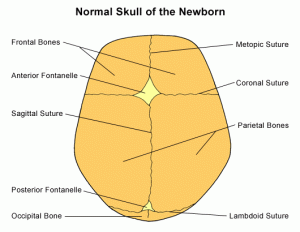 The skull of an infant is made up of free-floating bones separated by fibrous tissue called sutures. Larger sections of fibrous tissue at the front and back of the skull are called fontanelles- commonly known as “soft spots” on a baby’s head. This arrangement allows the infant’s head to pass through the birth canal and also enables the skull to grow with the brain in early infancy. As the brain grows, these bones are pushed apart, and new bone forms in the seams . The shape and location of these bones enables the head to expand in several directions — front-to-back as well as side-to-side.
The skull of an infant is made up of free-floating bones separated by fibrous tissue called sutures. Larger sections of fibrous tissue at the front and back of the skull are called fontanelles- commonly known as “soft spots” on a baby’s head. This arrangement allows the infant’s head to pass through the birth canal and also enables the skull to grow with the brain in early infancy. As the brain grows, these bones are pushed apart, and new bone forms in the seams . The shape and location of these bones enables the head to expand in several directions — front-to-back as well as side-to-side.
What is craniosynostosis?
Craniosynostosis occurs when one or more of the suture closes before the brain has stopped growing. The early closure of a single suture restricts the growth in that part of the skull and promotes growth in other parts of the skull where sutures remain open. This results in an abnormal shape of the skull, but does not prevent the brain from expanding to a normal volume. However, if many sutures close prematurely, the skull cannot expand to accommodate the growing brain. This can leads to increased pressure within the skull and impaired development of the brain. It is unknown what causes most cases of craniosynostosis, although a person’s genetic background may play a role. The hereditary form often occurs with other defects that can cause seizures, diminished intellectual capacity, and blindness. Genetic disorders commonly associated with craniosynostosis include Crouzon, Apert, Carpenter, Chotzen, and Pfeiffer syndromes.
There are 4 main types of Craniosynostosis:
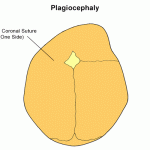 Plagiocephaly (unicoronal synostosis)
Plagiocephaly (unicoronal synostosis)
Plagiocephaly is the most common form of craniosynostosis. It occurs in approximately one out of every 2,500 births. Plagiocephaly involves early fusion of either the right or left side of the coronal suture, the suture that extends from each ear over the top of the head to the fontanelle. The forehead and brow of a child with plagiocephaly look as if they have been pushed back or flattened because the forehead and brow have stopped their normal growth.
Positional plagiocephaly is the most common cause of plagiocephaly. This is not caused by unilateral synostosis, but rather by sleeping in one position. The part of the skull that is dependent (in one position) tends to flatten out. Usually no intervention is needed. This is frequently seen in infants put on their back to sleep- the back of the head may flatten somewhat- this is temporary and improves with time.
 Brachycephaly (bicoronal synostosis)
Brachycephaly (bicoronal synostosis)
Brachycephaly, which means “short headed,” occurs when the right and left coronal sutures close prematurely. Brachycephaly results in an abnormally broad head with a high forehead. It is often associated with other craniofacial abnormalities, including Crouzon syndrome, Apert syndrome, Pfeiffer syndrome, and Saethre-Chotzen syndrome. It also is associated with Down syndrome (trisomy 21).
This type of craniosynostosis involves fusion of the metopic suture that runs from the top of the head toward the nose, which can create a ridge running down the forehead and gives the front of the head a wedge-shaped effect. The eyes also may be close together.
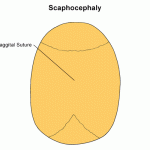 Scaphocephaly (sagittal craniosynostosis)
Scaphocephaly (sagittal craniosynostosis)
This early fusion involves the sagittal suture that runs from front to back on the top of the skull. The result can be a long, narrow skull.
Symptoms of Craniosynostosis:
* Absence of the normal feeling of a “soft spot” (fontanelle) on the newborn’s skull
* Disappearance of the fontanelle early
* A raised hard ridge along the affected sutures
* Unusual head shape
* Slow or no increase in the head size over time as the baby grows
For more information, including information about treatment, click here to go to the Resounding Health casebook on Craniosynostosis.
Advertisement:



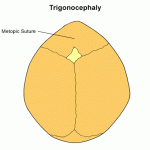
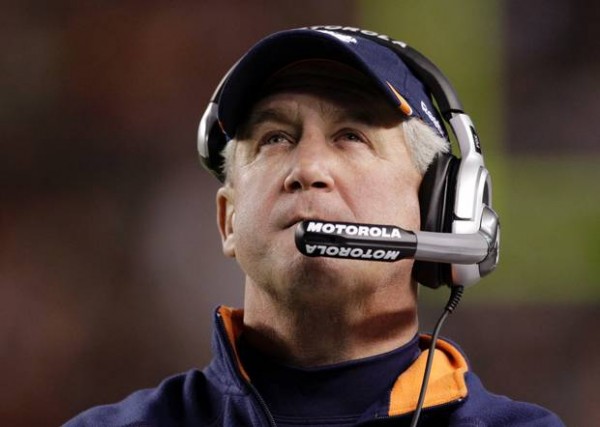
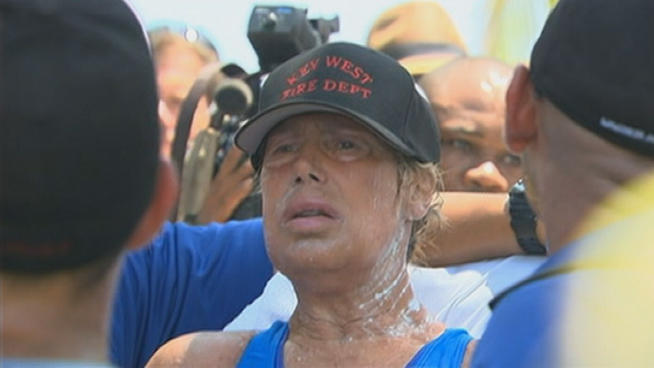
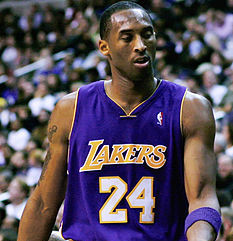





















3 Comments